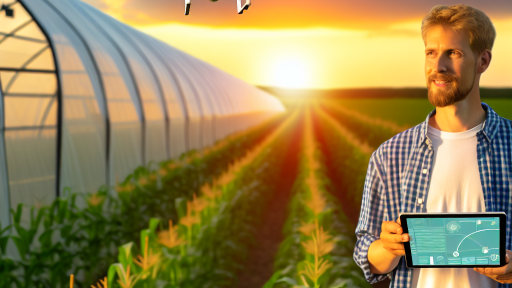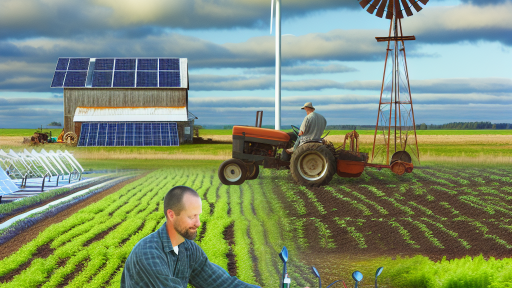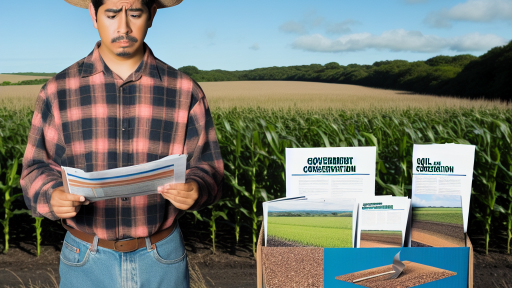Introduction to Farm-To-Table Legislation
Definition of Farm-To-Table Legislation
Farm-to-table legislation refers to laws that promote local food sourcing.
These laws encourage direct sales between farmers and consumers.
They aim to shorten supply chains in the food industry.
This process enhances food freshness and quality.
Importance of Farm-To-Table Legislation
Farm-to-table legislation ensures greater transparency in food sourcing.
It helps consumers make informed choices about their meals.
Moreover, it supports local economies and small farmers.
By reducing reliance on large corporations, it fosters sustainability.
This legislation also promotes healthier eating habits.
When consumers know where their food comes from, they feel empowered.
Impact on Agricultural Supply Chains
Farm-to-table legislation reshapes agricultural supply chains significantly.
Firstly, it reduces the distance food travels from farms to plates.
This reduction lowers carbon footprints associated with transportation.
Secondly, it enhances the relationships between consumers and producers.
Such connections encourage community engagement and support.
Transform Your Agribusiness
Unlock your farm's potential with expert advice tailored to your needs. Get actionable steps that drive real results.
Get StartedLastly, it holds producers accountable for food quality and safety.
Historical Context: Evolution of Agricultural Supply Chains
The Early Beginnings
Agricultural supply chains date back thousands of years.
Initially, farmers sold their goods directly to consumers.
This direct exchange fostered strong community ties.
However, producers faced limitations in terms of scale and reach.
The Rise of Marketplaces
In ancient civilizations, marketplaces became vital hubs.
Farmers would gather at local markets to sell their produce.
This practice encouraged competition among producers.
Consequently, consumer choice expanded significantly.
The Industrial Revolution’s Impact
The Industrial Revolution marked a turning point for agriculture.
Technology revolutionized farming methods and production capacity.
As a result, goods could be transported over great distances.
This evolution enabled the emergence of large agribusinesses.
Globalization and Supply Chains
With globalization, agricultural supply chains became more complex.
Countries began exporting and importing food products widely.
This shift increased competition on a global scale.
Consequently, consumers gained access to diverse food options.
Modern-Day Challenges
Today, transparency in agricultural supply chains is crucial.
Consumers demand to know the source of their food.
This interest has spurred initiatives for traceability.
Farm-to-table legislation aims to ensure this transparency.
Key Components of Farm-To-Table Legislation
Regulatory Framework
Farm-to-table legislation establishes clear regulations for agricultural practices.
These regulations ensure that food products are safe for consumers.
Regulations also cover how farms should handle food from production to distribution.
Showcase Your Farming Business
Publish your professional farming services profile on our blog for a one-time fee of $200 and reach a dedicated audience of farmers and agribusiness owners.
Publish Your ProfileAdditionally, they set standards for labeling and transparency.
This allows consumers to know where their food comes from.
Integrity of Products
Another essential component is the integrity of the products sold.
Farm-to-table legislation mandates tracking of food through the supply chain.
This helps in identifying the sources of food contamination quickly.
It also aids in maintaining the authenticity of organic products.
As a result, consumers can trust the claims made by producers.
Support for Local Farmers
The legislation promotes support for local farmers and producers.
By enabling farmers to market directly to consumers, the law enhances economic viability.
This reduces reliance on large corporate farms and food distributors.
Consequently, it fosters community relationships and strengthens local economies.
Consumer Education
Farm-to-table legislation emphasizes the importance of consumer education.
It provides resources that inform consumers about food sourcing practices.
Such knowledge encourages consumers to make informed choices.
Additionally, it increases demand for sustainably sourced products.
Ultimately, education helps drive the farm-to-table movement forward.
Environmental Standards
Environmental sustainability is a core aspect of farm-to-table legislation.
The law encourages sustainable farming practices that protect ecosystems.
These practices minimize pesticide use and promote soil health.
In turn, this supports biodiversity and combats climate change.
Farmers adopting these practices often receive incentives or grants.
Discover More: Innovations in Agricultural Insurance for Modern Farming
The Role of Transparency in Agricultural Practices
Consumer Trust and Safety
Consumer trust is critical in today’s food system.
Transparency enhances this trust in agricultural practices.
When consumers know where their food comes from, they feel more secure.
Transparency allows consumers to make informed choices about their food.
This leads to increased loyalty to brands that are open about their sourcing.
Understanding the Impact of Legislation
Legislation can establish standards for transparency in the food supply chain.
Such laws protect consumers from misleading claims about food sources.
Moreover, they hold producers accountable for their business practices.
Consequently, consumers can trust that they receive safe and quality products.
Encouraging Ethical Practices
Transparency promotes ethical practices among agricultural producers.
It helps ensure that farmers adhere to safety and sustainability guidelines.
When companies are open about their processes, they foster ethical competition.
This environment encourages others to improve their practices as well.
The Role of Technology in Enhancing Transparency
Technology plays a significant role in improving transparency.
Blockchain systems can track products from farm to table.
This technology helps verify the authenticity of claims made by producers.
As a result, consumers have easier access to information about their food.
Impact on Consumer Behavior
Transparency influences consumer purchasing decisions.
Showcase Your Farming Business
Publish your professional farming services profile on our blog for a one-time fee of $200 and reach a dedicated audience of farmers and agribusiness owners.
Publish Your ProfileMany consumers prefer to buy from brands that share their sourcing information.
This trend is growing as awareness about food origins increases.
Consequently, businesses benefit from adopting transparent practices.
Find Out More: Navigating Food Safety Policies for Sustainable Farming
Impact on Small Farmers: Challenges and Opportunities
Challenges Faced by Small Farmers
Small farmers face numerous challenges in the current agricultural landscape.
The introduction of farm-to-table legislation often imposes stringent regulations.
These regulations can be overwhelming for smaller operations.
Compliance costs can eat into their already limited resources.
Additionally, many small farmers lack access to the necessary technology.
This disparity can make it difficult to keep up with larger farms.
As a result, small farmers may struggle to meet transparency requirements.
Opportunities for Growth
Despite these challenges, farm-to-table legislation also presents opportunities.
Small farmers can leverage these laws to enhance their brand equity.
By providing transparency, they can attract health-conscious consumers.
Many customers appreciate knowing the origin of their food.
This shift in consumer behavior can benefit small farmers significantly.
Moreover, they can form partnerships with local restaurants.
Such collaborations can help create stable income streams.
Support Systems for Small Farmers
Various organizations offer support to small farmers navigating these changes.
Nonprofits provide resources and training on compliance strategies.
Additionally, government programs aim to assist with funding and technology.
Small farmers should actively seek out these opportunities.
Community support networks can also foster collaboration among farmers.
These networks can share best practices and resources.
The Future of Small Farms in a Legislative Context
As legislation evolves, small farmers must adapt continuously.
Innovation will play a crucial role in their survival and growth.
Those who embrace change can thrive in this competitive market.
Ultimately, small farmers can contribute to a more transparent and sustainable agricultural system.
With the right support, they can overcome challenges and seize new opportunities.
You Might Also Like: Benefits Of Conservation Programs For Sustainable Farming

Case Studies: Successful Implementation of Farm-To-Table Laws in Different States
California’s Progressive Farm-To-Table Initiative
California has pioneered farm-to-table legislation, focusing on local sourcing.
The legislation mandates transparency in agricultural supply chains for restaurants.
Additionally, it provides incentives for farmers who sell directly to consumers.
This initiative has boosted local economies and supported small-scale farmers.
Colorado’s Farm Fresh Program
Colorado implemented its Farm Fresh Program to enhance consumer awareness.
This program requires restaurants to disclose their sourcing practices.
It promotes a connection between diners and local producers.
The initiative has increased patronage for participating restaurants significantly.
New York’s Local Food Act
New York launched its Local Food Act to strengthen agricultural ties.
This act encourages schools to incorporate local produce into their menus.
Showcase Your Farming Business
Publish your professional farming services profile on our blog for a one-time fee of $200 and reach a dedicated audience of farmers and agribusiness owners.
Publish Your ProfileImportantly, it enhances nutrition and education about locally sourced foods.
Furthermore, this legislation has increased sourcing from nearby farms.
Vermont’s Community Supported Agriculture Model
Vermont’s approach promotes community-supported agriculture (CSA) programs.
These programs forge direct links between consumers and local farms.
They enhance transparency and support sustainable farming practices.
Notably, they have significantly increased consumer engagement with farming.
Oregon’s Innovative Tracking System
Oregon implemented an innovative tracking system for agricultural products.
This system ensures every product’s source is traceable and verifiable.
Consumers can access detailed information about their food’s origins.
Consequently, this has fostered trust between consumers and producers.
Texas’ Farm-To-Fork Initiative
Texas launched the Farm-To-Fork Initiative focusing on urban agriculture.
This initiative encourages local urban farms to supply fresh food to communities.
Moreover, it includes educational programs about growing food sustainably.
As a result, urban residents have better access to fresh, local produce.
Explore Further: Navigating Agricultural Insurance Regulations for Farmers
Technological Innovations Supporting Transparency in Supply Chains
Introduction to Supply Chain Transparency
Transparency in agricultural supply chains has become increasingly important.
Consumers demand to know where their food comes from.
Technological innovations play a vital role in achieving this transparency.
Blockchain Technology
Blockchain technology offers a secure method for tracking agricultural products.
It creates an immutable ledger of transactions along the supply chain.
Farmers can record every step, from planting to sale, on the blockchain.
Consequently, consumers gain access to this information in real-time.
IoT Devices
Internet of Things (IoT) devices enhance monitoring throughout the supply chain.
They collect data on environmental conditions and product quality.
For instance, sensors can track temperature and humidity during transportation.
This assists in maintaining optimal conditions for perishable goods.
Data Analytics
With the rise of big data, analytics tools have transformed supply chain management.
These tools help identify inefficiencies and improve decision-making.
Farmers and distributors can analyze trends to optimize production processes.
Moreover, data analytics can enhance traceability and accountability.
Mobile Apps
Mobile applications provide an easy way for consumers to access supply chain information.
Apps can offer insights into product origins and farming practices.
This accessibility empowers consumers to make informed choices.
Farmers can use these apps to communicate directly with consumers.
Case Studies of Successful Implementations
Multiple companies have successfully implemented these technologies.
For example, FreshDirect uses blockchain to track its food products.
Agricola Del Sur leverages IoT devices to monitor crops in real-time.
Such implementations demonstrate how technology enhances supply chain transparency.
Future Directions: Potential Reforms and Legislative Trends
Emerging Legislative Trends
Recent movements emphasize the importance of transparency in food sourcing.
A growing number of states are considering or have enacted farm-to-table laws.
Showcase Your Farming Business
Publish your professional farming services profile on our blog for a one-time fee of $200 and reach a dedicated audience of farmers and agribusiness owners.
Publish Your ProfileThese laws aim to create a direct link between consumers and local producers.
Supporters argue that such regulations enhance food safety and accountability.
Furthermore, they encourage sustainable agricultural practices and local economies.
Prospective Reforms in Supply Chain Transparency
Potential reforms may focus on digital traceability systems for agricultural products.
Technological advancements could facilitate more efficient tracking of food sources.
Farmers could benefit from streamlined processes and reduced administrative burdens.
Additionally, consumers would gain greater access to information about their food.
Improved transparency can foster trust between consumers and producers.
Engagement with Stakeholders
Legislators will need to engage a broad range of stakeholders.
Farmers, distributors, and consumers should all have input in developing these reforms.
Public consultations can foster greater understanding and cooperation among interested parties.
Successfully implementing reforms requires collaboration and open dialogue.
Future legislation should prioritize inclusivity to address diverse agricultural needs.
Global Influences on U.S. Legislation
The U.S. can learn from successful international farm-to-table initiatives.
Countries like France and Italy have established robust traceability systems.
Lawmakers should examine these models to adapt best practices domestically.
Global awareness regarding food sourcing is increasingly influencing consumer behaviors.
U.S. producers must adapt to meet evolving expectations for transparency and sustainability.
Potential Challenges Ahead
Resistance from traditional agricultural sectors could pose challenges.
Varieties in farming practices across regions can complicate uniform regulations.
Legislators must navigate economic concerns while promoting sustainable practices.
Additionally, access to resources for small farmers should be a priority.
Equitable reform will require balancing interests from all parties involved.
A Vision for the Future
Ultimately, the goal is to create a more transparent agricultural system.
This approach should ensure the safety of food supplies and promote sustainability.
As legislation evolves, strong support from consumers can drive positive change.
Empowered consumers can demand accountability and foster community engagement.
Looking ahead, a commitment to transparency will reshape how we view our food systems.
Additional Resources
Texts adopted – Farm to Fork Strategy – Wednesday, 20 October 2021




